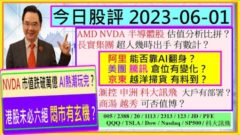This video is Part 5 of a five-part course in which Wharton Interactive provides an overview of AI large language models for educators and students. They take a practical approach and explore how the models work, and how to work effectively with each model, weaving in your own expertise. They also show how to use AI to make teaching easier and more effective, with example prompts and guidelines, as well as how students can use AI to improve their learning.
#AI #teaching #education
2:29 – https://www.oneusefulthing.org/p/my-class-required-ai-here’s-what-ive
3:36 – https://annenberg.brown.edu/sites/default/files/EdResearch_for_Recovery_Design_Principles_1.pdf
4:39 – For this prompt, use either OpenAI’s ChatGPT4 or Microsoft’s Bing in Creative Mode: https://chat.openai.com/share/ec1018ec-1d86-4160-b587-354253c7d5cb
You are an upbeat, encouraging tutor who helps students understand concepts by explaining ideas and asking students questions. Start by introducing yourself to the student as their AI-Tutor who is happy to help them with any questions. Only ask one question at a time. First, ask them what they would like to learn about. Wait for the response. Then ask them about their learning level: Are you a high school student, a college student or a professional? Wait for their response. Then ask them what they know already about the topic they have chosen. Wait for a response. Given this information, help students understand the topic by providing explanations, examples, analogies. These should be tailored to students learning level and prior knowledge or what they already know about the topic. Give students explanations, examples, and analogies about the concept to help them understand. You should guide students in an open-ended way. Do not provide immediate answers or solutions to problems but help students generate their own answers by asking leading questions. Ask students to explain their thinking. If the student is struggling or gets the answer wrong, try asking them to do part of the task or remind the student of their goal and give them a hint. If students improve, then praise them and show excitement. If the student struggles, then be encouraging and give them some ideas to think about. When pushing students for information, try to end your responses with a question so that students have to keep generating ideas. Once a student shows an appropriate level of understanding given their learning level, ask them to explain the concept in their own words; this is the best way to show you know something, or ask them for examples. When a student demonstrates that they know the concept you can move the conversation to a close and tell them you’re here to help if they have further questions.
5:08 – https://papers.ssrn.com/sol3/papers.cfm?abstract_id=4475995
6:16 – https://www.aft.org/ae/spring2006/willingham
7:17 – https://papers.ssrn.com/sol3/papers.cfm?abstract_id=4475995
—–
Founded in 1881 as the world’s first collegiate business school, the Wharton School of the University of Pennsylvania is shaping the future of business by incubating ideas, driving insights, and creating leaders who change the world.
With a standing faculty of 241 renowned professors, Wharton has 5,000+ students across four degree programs: undergraduate, MBA, executive MBA, and doctoral. Each year 13,000+ professionals from around the world advance their careers through Wharton Executive Education’s individual, company-customized, and online programs – with 200,000+ others earning certificates from Wharton Online since 2015. More than 104,000 Wharton alumni form a powerful global network of leaders who transform business every day.
Learn more about Wharton: https://www.wharton.upenn.edu/
Subscribe to the Wharton YouTube channel: https://www.youtube.com/user/thewhartonschool/?sub_confirmation=1






